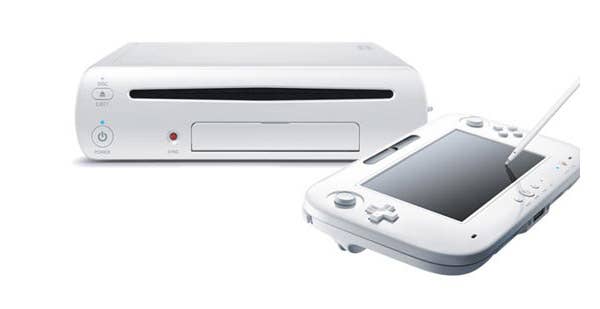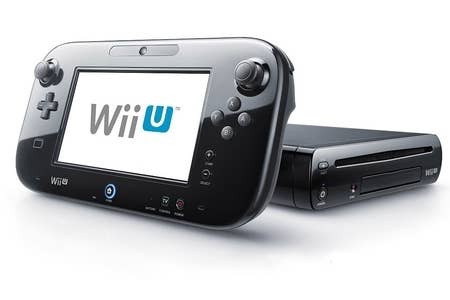Is Wii U Too Expensive? And What Happened to the PS3 Price-Cut?
Digital Foundry on console build costs and the decisions facing the platform holders this holiday season.
The Q4 debut for Nintendo Wii U signals the coming of the next-gen consoles and the final hurrah for the Xbox 360 and PlayStation 3 - before the debut of their replacements next year, at least. Is it a time to maximise userbase, slashing prices and recouping the investment through software sales? Or alternatively, should the platform holders play it safe and keep prices high? Initial indicators seem to suggest that it's the latter strategy that is being pursued, provoking some level of controversy within the industry.
It's Nintendo's pricing on Wii U that has surprised many, with the 8GB pack coming in at £249/$299 while the 32GB premium version with Nintendo Land pack-in weighs in at £299/$349 (note that UK prices include 20 per cent VAT, whereas US prices lack sales tax). As launch prices go, this isn't bad in comparison to the precedents set by previous console releases, and Nintendo will point to its innovative tablet controller and exclusive games to set it apart from the competition.
However, it's safe to say that the Wii U isn't a typical launch - at its core, the guts of the unit itself has far more in common with current-gen consoles than Nintendo would probably care to admit, improved by various measures in some regards, but noticeably weaker elsewhere. There's also the fact that a lot of the launch software will already be available on consoles that cost significantly less.
"Wii U benefits from a more modern GPU and a useful memory boost, but it's a machine built to a budget and the price-point is around £50 higher than we expected."
To a great degree, price-points are defined by BOM - the Bill of Materials. On the plus side, Wii U benefits from a significantly more modern graphics core, equated by many with an entry-level enthusiast GPU a couple of generations old, provided by AMD. Our sources tell us that the hardware is rich in features compared to the Xenos core within the Xbox 360 (also supplied by AMD) but somewhat lacking in sheer horsepower: still a useful upgrade overall though. However, on the flipside, the tri-core IBM "Espresso" CPU is an acknowledged weakness compared to the current-gen consoles - the processors consisting of revised, upgraded versions of the Wii's Broadway architecture, in itself an overclocked version of the main core at the heart of the ancient GameCube. Nintendo clearly hoped that tripling up on cores, upping clock speed and adding useful features such as out of order execution would do the trick, but key developers are saying otherwise: GPU-heavy games get a boost, but CPU-dependent titles are challenging to bring over to the new platform. Debate still rages over the extent to which Wii U is a next-gen console at all, and whether its pricing fits accordingly.
The overall conclusion one can draw from the core components here is that Nintendo hasn't really paid so much attention to competitive forces, targeting a spec that can be mass-produced relatively cheaply. Areas where we know Nintendo easily outperforms Xbox 360 come to down commodity items such as RAM and flash storage: these are upgrades that won't significantly affect the bottom line. We also know that the silicon is manufactured in the 40-45nm range, giving the platform holder significant leeway to cut costs going forward in the medium to longer term (next-gen consoles will all be fabricated in the region of 28nm next year).

Of course, Nintendo's key point of differentiation is the tablet controller - which obviously adds to the bill of materials, but once again we see a piece of technology built to a price. In a world where Chinese no-name manufacturers can develop capacitive 7-inch touchscreen Android tablets with ARM processors, 8GB of flash storage and 512MB/1GB of RAM priced at £50-£60, Nintendo's resistive screen tablet produced in the millions would clearly be significantly cheaper to mass-manufacture - even factoring in the latency free AV transmission tech.
Bearing in mind the challenge Nintendo faces in competing against Microsoft and Sony - with a significant amount of its launch titles already out on the rival platforms - the pricing on the Nintendo console does look a touch on the expensive side, and I expected price-points closer to the original Wii - £180/$250 was instrumental in Nintendo's success back in 2006. Up against the £149/$249 4GB Xbox 360 (where prices fluctuate downwards significantly) there is the sense that Nintendo could well be repeating the mistake it made with 3DS. However, this time I suspect there is more leeway for the platform holder to cut costs if it has to.
"Sony's strategy in bringing a newer, cheaper PS3 to market at much the same price as its higher quality predecessor is somewhat baffling to say the least."
However, based on Sony's announced price-points for the new PlayStation 3 "Super Slim", perhaps Nintendo has got its pricing just right. The new revision is certainly a curious piece of kit - the smallest, most discrete PlayStation 3 yet produced, with a footprint just a little larger than that of an A4 piece of paper. Despite the diminutive form-factor, the machine's got it where it matters - the functionality in terms of both hardware and software is a match for the current PlayStation 3 Slim: the same array of ports, full Blu-ray functionality, and even the ability to insert your own hard drive remains intact, though the situation with the DIY upgrade potential of the 12GB flash SKU heading for Europe exclusively is still unknown.
However, similar to the Wii U, it is a machine built to a price - and that would be a significantly cheaper one than the outgoing PS3 Slim. The mixture of matte and gloss plastics lacks the premium finish of the current PS3 Slim casing, while power and eject buttons again don't match the quality feel of the established unit. However, the most controversial element is the drive bay of the new unit. Sony has gone for a significantly cheaper Blu-ray drive: the slot-loading unit found in previous models has been replaced with a more basic device, featuring a sliding lid cover. It's perhaps a compromise too far - while perfectly functional, the so-so quality plastics and less than smooth travel of the lid across the face of the case are a little disappointing.
If the new PlayStation 3 had seen its reduction in cost-price passed onto the users, any controversy would be effectively nullified, but in the here and now, the value proposition is far from certain and some have even suggested that the new models represent a hike in prices. Certainly, 320GB PS3 Slim bundle deals do seem to offer very competitive value up against the new 500GB model to the point where the additional refinement in build quality may make the older machine a better buy for many people.

Quite why the new PlayStation hasn't seen any aggressive price reduction may seem quite puzzling bearing in mind the simpler construction and quality of materials, but put into context with current production technologies and Sony's own fortunes, the reasoning perhaps becomes clearer. Firstly, smaller form factors are typically driven first and foremost by new efficiencies in chip design or manufacture.
Current-gen consoles have been locked at 45nm for quite some time, and there just isn't enough volume at the cutting-edge processes (28nm and lower) to sustain a multi-million selling device like the PlayStation 3 - any savings here would be reliant on the maturing of the current technology. Thanks to the LinkedIn profile of IBM's Elizabeth Gerhard, we know that Sony has re-architected Cell down to 22nm, but it's surely too early to have that part in production right now. However, the new chassis will surely host the smaller, cooler, more energy-efficient processor in time - just as the PS3 Slim was revised several times with die-shrunk CPU and GPU components. In the meantime, the simpler construction and even the smaller packaging (in terms of shipping costs more than anything) will save Sony plenty of money.
"Microsoft enjoys the lowest build costs with the Xbox 360, and we fully expect to see another Black Friday blow-out - after managing to shift over 900,000 units last year with an aggressive price-cutting campaign."
The other element to factor in to the lack of a significant price-drop is related to Sony's current financial situation: the inclusion of the hard drive adds significantly to the base cost, while the Thailand flood disaster which wiped out HDD production last year must have surely hit Sony's financials hard to the point where we still wonder just how profitable - if at all - the Slim model has been for the company in recent times. It's no mistake that the new entry level 12GB flash SKU factors out the hard drive completely and swaps in a replacement for another expensive part - the Blu-ray drive. I honestly expected a price-point closer to £150 through those factors alone, but it may well be down to retail to make that happen before Christmas.
All of which leaves Microsoft sitting pretty with its 360S: cost-price of DVD drives remains significantly lower than Blu-ray equivalents, and while its processor currently remains at the 45nm fabrication process, it still features an important advantage over the PlayStation 3: both CPU and GPU components are incorporated into a single piece of silicon, slashing production costs - not just in terms of silicon manufacture, but also in terms of related components such as the cooling system. Not much has changed with the 360S since the product launched back in 2012 aside from combining a couple of minor chips, but Microsoft continues to explore new ways of cutting the price and it's almost certain that the central processor will shrink again from its current 45nm, but probably not in time for the holiday season this year.
The overall message we take from recent developments is fairly straightforward: Nintendo has the belief in Wii U to believe that its pricing will be enticing enough and in a way this helps out Sony with its new PlayStation 3 - to the point where it actually feels comfortable to release a cheaper model without significantly adjusting prices. While the jury is out on the potential success of this strategy, Sony has a truly superb value-added secret weapon at its disposal: namely the brilliant PlayStation Plus, with its excellent instant games collection. It's surely a case of when, not if, three-month trial subscriptions will be added to the hardware package.
Meanwhile, Microsoft has the lowest bill of materials of all the platform holders, and based on its outright price-aggression during last year's Black Friday - where it shifted a colossal 900,000 consoles over a single weekend in just one territory - it'll be interesting to see where it heads next for the last great holiday season, and what kinds of deals retail will come up with across all product lines.









